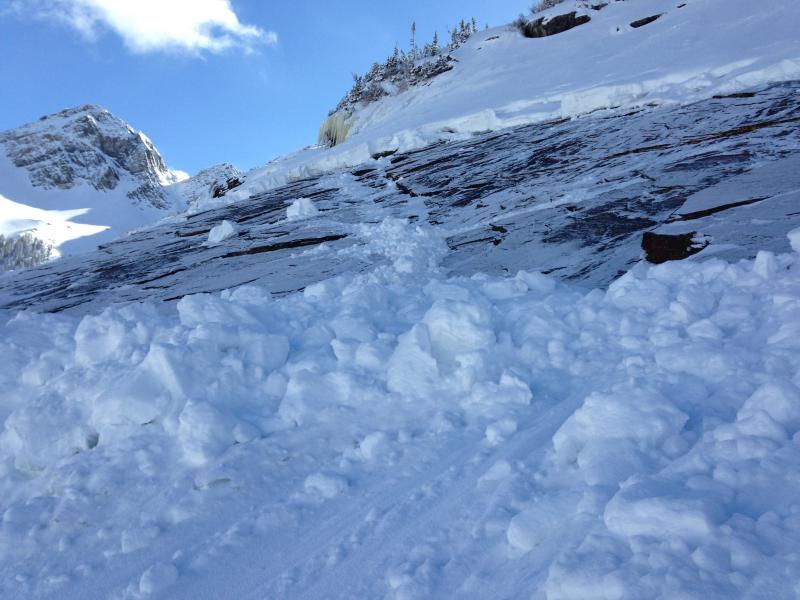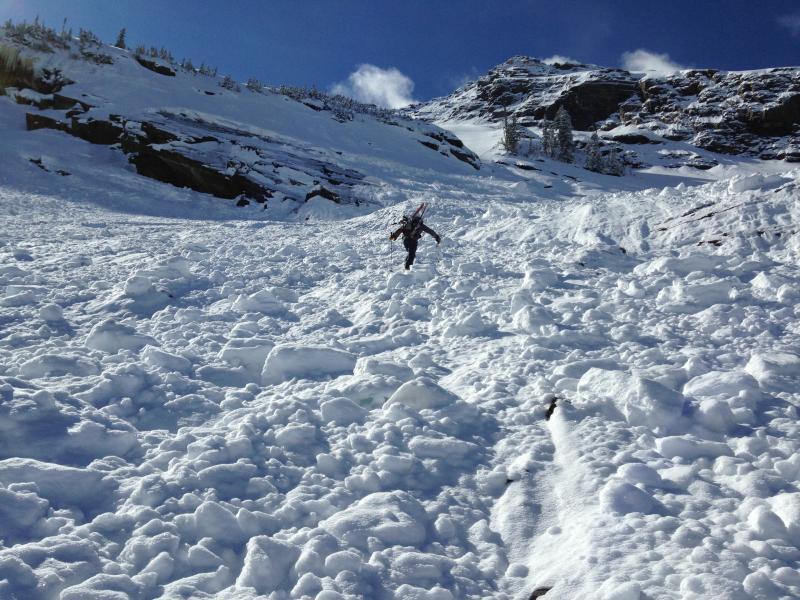An experienced party of 4 backcountry skiers were skiing in Broad's Fork of Big Cottonwood Canyon. They had skied the skier's right side of the "diving board" twice, and were heading up their skin track for a third run. Two of the group were about 100 or 150 yards ahead of the other two. The up track worked its way back and forth through the trees and gully on a shallow rib to the observers left of the "diving board" slope.
All four were on the lower 1/4 to 1/3 of the slope when a natural avalanche released above them around 1 to 1:30 pm. The two upper people were about 20 or 30 feet apart, and the upper most person saw the wall of snow coming down and yelled. Both were caught, carried and tumbled, and estimate the distance they were carried to be about 75 yards. The upper person (A) was buried to his neck, with one hand out, the lower person (B) ended up on top, though his face was cut up. The two lower people on the slope heard the yelling, saw a "wall of white", and scattered and were not caught.
Person B immediately began the search for person A. He determined that the two below hadn't been caught, and started running uphill doing a beacon search and yelling. When person A quickly yelled back, he was able to rapidly locate him and dig him out. It was determined he had a lower leg injury, and couldn't stand. With no cell phone coverage in that part of Broads, two people headed out for help while one stayed with person A. They were only able to get a call for assistance out well below the foot bridge.
Rescuers tried to land a helicopter in the area in the afternoon, but visibility was too poor due to low clouds and light snow showers. So Salt Lake County Search and Rescue and Wasatch Backcountry Rescue responded on skis. Later that evening, around 9:30 pm there was better visibility, and the injured person was evacuated by helicopter. The party rescued wish to heartily thank them for their hard, cheerful work on such a cold, late Sunday.
Photo below is the hole relatively near the toe of the slide where the person buried to their neck was dug out.
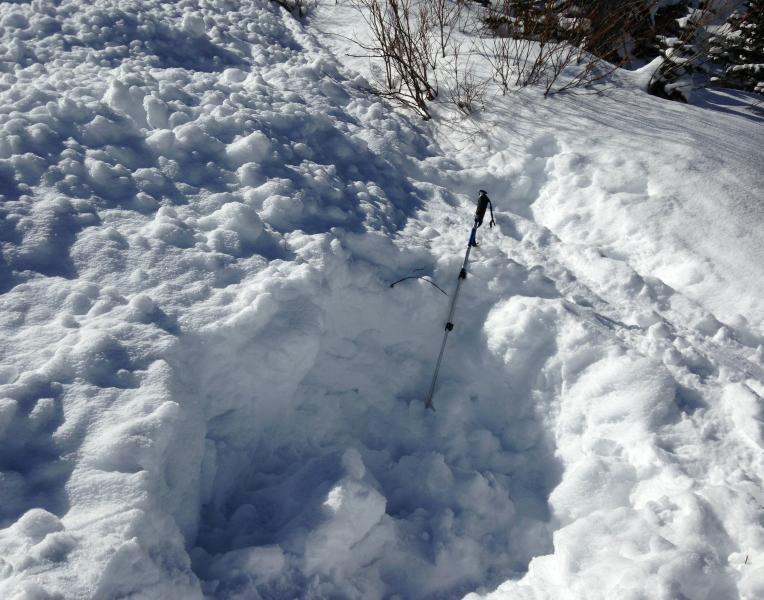
The area above where the party was traveling has widespread, steep, rock slabs on the slopes above and glide avalanches sometimes occur in this area. While the slide they were caught in was large and serious compared to the size of a person, the avalanche that released is only a very small portion of the avalanche potential in Broads Fork. There are many other steep slopes adjacent to and above the slide that released.
This party appeared to just have some bad luck and they were just in the wrong place at the wrong time. With an up track in a slightly different spot, they would not have been hit by this particular slide on this particular day, but would have been vulnerable to other potential slides.
The debris had many very large, icy blocks, particularly higher up in the track. The upper debris also spread into and through the trees. They were very lucky to have been low when the slide released, and were mostly involved in soft slab debris.
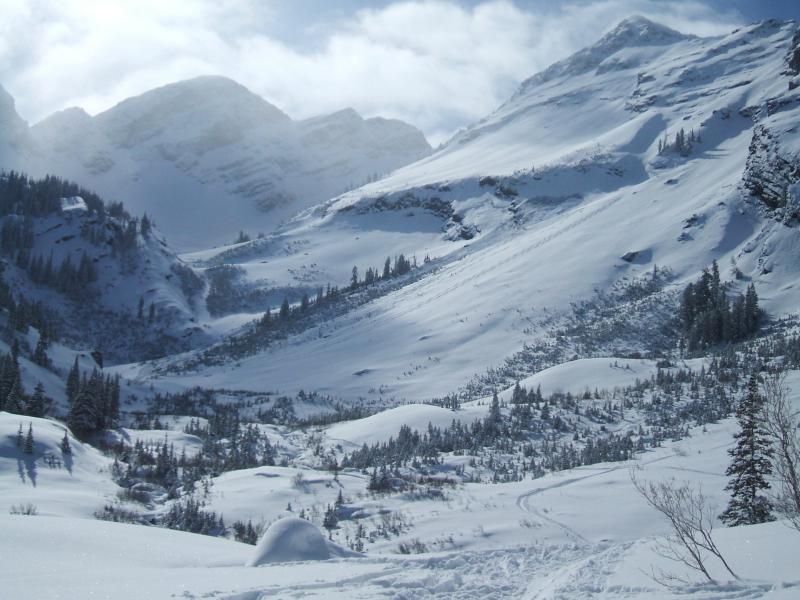
Another overview photo of the slide, a photo taken at the toe of the slide looking up (slope angle from toe to crown was approximately 31 degrees). The third photo shows how efficiently even a shallow gully channels the snow of the avalanche, creating deep debris.
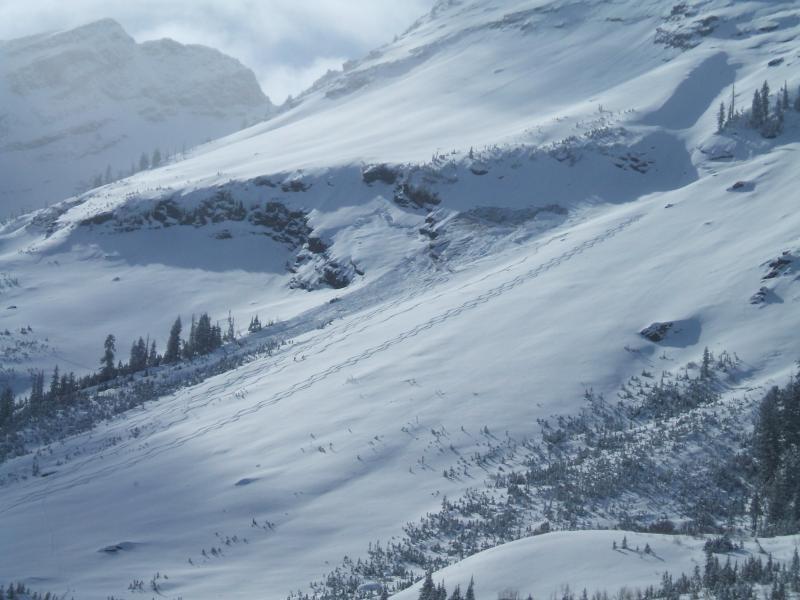
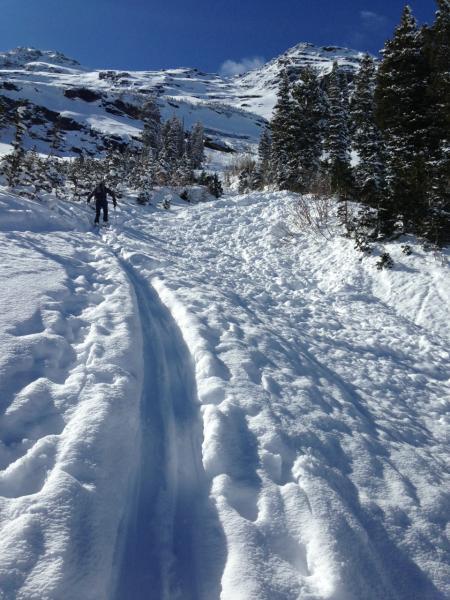

Photos close to the crown, and looking up at the crown.
After looking at the slide, I have to assume it was a natural, glide avalanche. The slide is complex - in addition to the glide part that released to the rock slab, parts released in the upper pack only to the sides and in the track, and portions of the glide section rapidly "stepped up" even on the slab. I don't feel the party was close enough to the starting zone to have released a shallow slide remotely, that then would have triggered the deeper slide. There were no other weather events occurring at the time that would have released a natural, shallower slide first.
Glide occurs when the entire snow pack moves as a unit on the ground or rock slabs below--similar to the way a glacier moves and they can release catastrophically at random intervals. They often occur without warning without any obvious weather contributory factors. The crown face looked like it had "older areas" - portions that had been exposed to the air for a much longer time.
